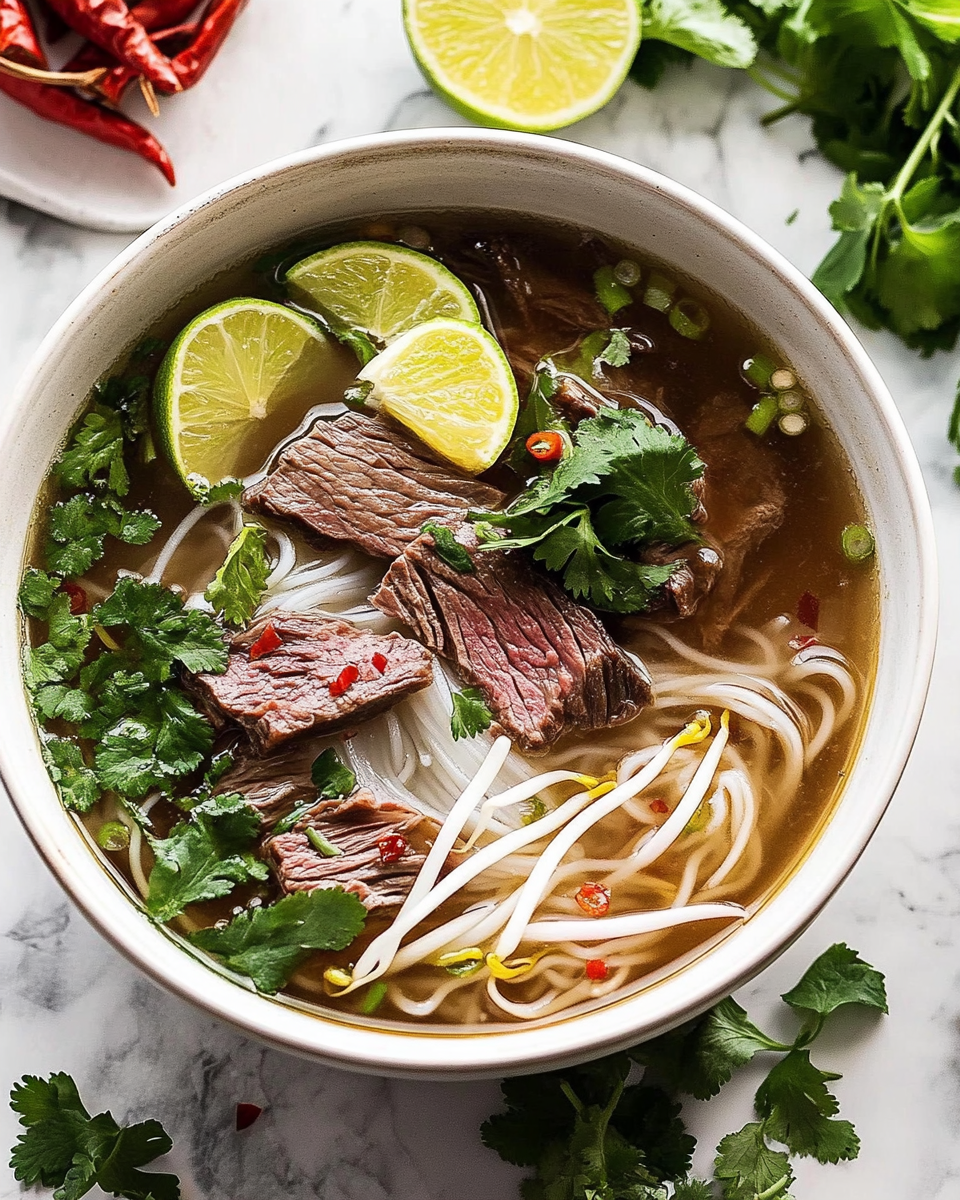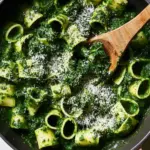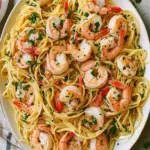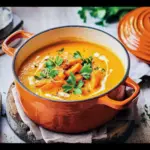This Vietnamese Pho is a perfect harmony of rich, savory broth, tender beef, and aromatic herbs, making it a truly comforting meal for any occasion. The fresh herbs and zesty lime elevate the flavors to a whole new level, giving it a fragrant and refreshing finish.
The beauty of Pho lies in its simplicity, allowing the quality of ingredients to shine. Whether you’re making it for yourself or sharing with loved ones, this dish is a wonderful way to bring people together around a warm, satisfying meal that has a true depth of flavor. It’s perfect for a cozy evening or a casual gathering, and the customizable toppings add the finishing touch.
Full recipe:
Ingredients:
-
1 onion, halved
-
1 ginger piece (about 4 inches), halved
-
2 tbsp vegetable oil
-
1 lb beef bones (preferably marrow bones)
-
1 lb beef brisket or flank steak, thinly sliced
-
4 cups beef broth
-
2 cinnamon sticks
-
3 star anise
-
1 tbsp coriander seeds
-
4 cloves
-
1 tbsp sugar
-
1 tbsp salt
-
1 tbsp fish sauce
-
1 package pho rice noodles (about 8 oz)
-
Fresh herbs (cilantro, Thai basil, mint)
-
Bean sprouts
-
1 lime, cut into wedges
-
2-3 chili peppers, thinly sliced
-
Hoisin sauce (optional)
-
Sriracha sauce (optional)
Directions:
-
Char the onion and ginger by placing them directly on an open flame (or broil them in the oven) for 5-10 minutes until the skins are blackened. Set aside.
-
In a large pot, heat the vegetable oil over medium-high heat. Add the beef bones and brisket slices, browning them for 5 minutes.
-
Add 8 cups of water to the pot, scraping the browned bits from the bottom. Bring to a boil, then reduce the heat and let it simmer for 1 hour, skimming off any impurities.
-
Add the charred onion and ginger, then the cinnamon sticks, star anise, coriander seeds, cloves, sugar, salt, and fish sauce. Simmer the broth for another 1 to 1.5 hours, then strain the broth into a clean pot, discarding the solids.
-
Cook the pho noodles according to package instructions, then drain and rinse them under cold water.
-
To assemble, place the cooked noodles in a bowl, add a few slices of beef brisket, and pour the hot broth over the top. Top with fresh herbs, bean sprouts, lime wedges, chili peppers, and a drizzle of hoisin or sriracha sauce if desired.
Prep Time: 15 minutes | Cooking Time: 2 hours | Total Time: 2 hours 15 minutes
Kcal: 350 kcal | Servings: 4 servings
The History of Pho: A National Treasure
Pho has a deep cultural history that stretches back to the early 20th century in Vietnam. The origins of Pho are somewhat debated, but it’s generally believed that Pho evolved in northern Vietnam, specifically in Hanoi, during the French colonial period. The dish initially came from street vendors who would serve their pho from carts, where people could enjoy a hot and satisfying meal on the go. Over time, pho has become a symbol of Vietnam’s culinary identity.
Pho’s journey didn’t stop at the streets of Vietnam; it spread worldwide as Vietnamese immigrants took their beloved dish with them to various corners of the globe. Today, pho is enjoyed not only in Vietnam but in countries across the world, particularly in communities with a large Vietnamese diaspora, like the United States, France, and Australia. Its widespread popularity reflects the dish’s ability to resonate with people everywhere.
The Components of Vietnamese Pho: Broth, Noodles, and Toppings
Pho consists of three key components: the broth, the noodles, and the toppings. Each part of the dish is integral to achieving that perfect balance of flavors and textures.
-
The Broth: The heart and soul of pho is its broth. Traditional pho broth is made by simmering beef bones (or sometimes chicken bones) for several hours, allowing the collagen and marrow to release into the liquid, which creates a rich, silky texture. The broth is flavored with an aromatic blend of spices, including cinnamon, star anise, cloves, and coriander seeds, as well as charred onion and ginger. These ingredients infuse the broth with layers of complex, aromatic flavors that define pho.
-
The Noodles: Pho uses a particular type of rice noodle, which is flat and wide, making it ideal for soaking up the flavorful broth. The noodles are typically cooked separately from the broth and then added to each individual bowl. This method ensures that the noodles don’t become too soft or soggy.
-
The Toppings: Pho is served with a variety of fresh toppings that enhance the flavor and provide texture contrast. Common toppings include thinly sliced beef (usually brisket or flank steak), fresh herbs like Thai basil, cilantro, and mint, bean sprouts, lime wedges, and thinly sliced chili peppers. Some people also enjoy adding hoisin sauce or sriracha for a little extra kick.
The Art of Making the Perfect Pho Broth
The broth is arguably the most important part of making pho, and there are a few things to keep in mind to ensure it’s perfect. The process requires patience, as simmering the bones for several hours is necessary to extract all the deep flavors from the beef. For the most flavorful broth, it’s essential to carefully skim off any impurities that float to the top during the simmering process. This will ensure the broth remains clear and free of any unwanted flavors.
The combination of spices used in pho broth is essential to creating that signature fragrance. The star anise, cinnamon, cloves, and coriander seeds all contribute distinct notes that balance out the richness of the beef broth. Additionally, charring the onion and ginger before adding them to the broth adds a smoky, caramelized depth that enhances the final flavor. The balance of sweet, salty, and aromatic flavors is key to crafting the perfect pho broth.
Serving and Customizing Your Pho
One of the reasons Pho is so beloved is its versatility and the ability to customize it to your personal tastes. While the classic beef pho is the most popular, there are many variations of the dish. Chicken pho (Pho Ga) is an alternative option for those who prefer a lighter, less rich broth. You can also adjust the toppings to suit your preferences—whether you prefer more bean sprouts, extra lime, or a burst of heat from additional chili peppers.
Pho is traditionally served as a street food, which means it’s often enjoyed casually, and there’s no need for formal dining. However, it has gained recognition as a gourmet dish, and many restaurants now offer pho in a more refined presentation, with carefully curated ingredients. In Vietnam, pho is typically eaten for breakfast, but it’s equally suitable for lunch or dinner. The flexibility of this dish means that it can be enjoyed any time of day.
Health Benefits of Pho: A Nourishing, Wholesome Meal
Pho is not only delicious but also a nutritious dish. The broth is made by simmering beef bones or chicken, which is rich in collagen, amino acids, and minerals like calcium and magnesium. These nutrients are good for joint health and can contribute to a healthy skin appearance. The fresh herbs and vegetables added to pho also pack a nutritional punch, providing vitamins and antioxidants to support overall health.
Additionally, pho is a relatively low-calorie meal, especially when you choose lean cuts of meat or opt for a lighter version with chicken. The dish is naturally gluten-free, making it suitable for individuals with dietary restrictions. The balance of proteins, carbs, and fresh vegetables makes pho an excellent meal for maintaining energy levels, improving digestion, and promoting well-being.
Conclusion: Why You Should Try Making Vietnamese Pho at Home
Making Vietnamese pho at home can be a rewarding experience. While it may take a little time and effort, the result is a bowl of aromatic, flavorful broth that’s both comforting and satisfying. Homemade pho allows you to control the quality of ingredients and customize the dish to your liking. Whether you’re looking to recreate a traditional dish or experiment with new toppings, pho provides endless possibilities.
Additionally, making pho at home is a great way to impress your family or guests with your cooking skills. The rich, savory broth, tender beef, and fresh herbs will undoubtedly leave everyone satisfied. Whether you’re a pho enthusiast or new to the dish, it’s easy to see why this Vietnamese classic has become a global favorite. So roll up your sleeves, gather your ingredients, and enjoy the process of making this delicious, aromatic dish in your own kitchen.
Pho is more than just food—it’s a celebration of Vietnamese culture and cuisine. It embodies the tradition, creativity, and communal spirit of the country’s food culture. Whether you’re slurping up noodles on a chilly evening or sharing a pot of pho with loved ones, this dish brings people together and offers a taste of Vietnam in every spoonful.






